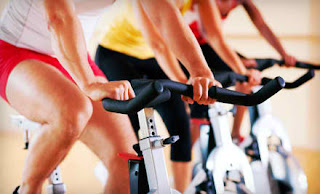Cyclists do not commonly experience heel pain, but if they
do have it, it is mainly because of over straining while pedaling. During a
typical two hour cycling ride, a cyclist will be to make 83 crank revolutions
per minute and that’s a total of 10,000 cranks revolution in two hours. This
puts a considerable amount of stress to the calf muscles and feet while pushing
against the pedal, especially when going uphill.
The most common type of heel pain a cyclist can encounter is
a strain to the Achilles tendon. The Achilles tendon is the largest tendon in
the body. It attaches behind the calcaneus or heel bone and attaches to the
calf muscles above. The pain commonly occurs at the attachment of the Achilles
tendon to the heel bone. Commonly referred to Achilles tendinitis, this is the
inflammation behind the heel causing pain, swelling, tenderness and heat when
the touched.
Another common cause of heel pain among cyclers involves the
plantar fascia. This fascia runs underneath the foot and also attaches at the
bottom portion of the heel bone to the balls of the foot. It is responsible for
the arch of the foot and is very important for its biomechanics. This too is a
strong tendon and is constantly under stress when walking and running. This is
a particularly common among runners but it too can occur among cyclist.
The reason why cyclers experience heel pain is due to
erroneous training, failing to do stretching exercises before bicycling, wrong
positioning, poor equipment, random peddling and improper footwear. Error in training is a result of apply too
much intensity too soon. Stretching is an important pre training measure in
preventing injury. Foot positioning while pedaling is important, so as not to
strain any muscles or tendons. Using worn out shoes do not provide much support
and cushioning, and can irritating the plantar fascia.
Treatment primarily involves identify the specific foot
problem. Visiting a podiatrist is best for these situations and they can also
assist and give advice in of the do’s and donts of proper foot care whether in
training or not.

No comments:
Post a Comment